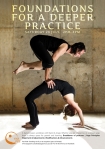Kapalabhati
Kapalabhati
Kapalabhati is one of the important cleansing practices that the Yogi performs before the practice of pranayama. There are a number of reasons.
Firstly, it clears the sinus cavity. From the physical point of view this may be the most important one. The name of the practice reveals this: Kapalabhati means ‘Shining Skull’. When the sinus and nasal cavities are cleansed, air can flow freely. A free flow of air helps to keep the brain in a state of clarity and ‘shininess’ because the sinus cavities are just underneath the brain cavity. We know that there is no clarity when our sinuses are severely blocked. Even thinking seems difficult. So for the Yogi, to whom clarity of mind is important, kapalabhati is very useful.
 Another important reason for this practice is that it creates heat in the body. Heat destroys impurities in the human system. In the winter heat is also necessary to keep the body warm. You may be able to save on electricity bills.
Another important reason for this practice is that it creates heat in the body. Heat destroys impurities in the human system. In the winter heat is also necessary to keep the body warm. You may be able to save on electricity bills.
Not only is a physical heat created but also a psychic heat. Kapalabhati creates energy through the diaphragmatic action as well as the holding of the breath. The diaphragmatic movement creates energy and the holding of the breath together with the locks unites the different energies and thereby creates more energy.
There are two types of energy in the body that the Yogi is concerned with: prana and apana. Prana is seated in the upper body from the waist up and regulates breathing. It gives a sense of lightness. Apana is seated in the lower part of the body from the waist down and deals with elimination. It gives a sense of gravity. In the locks, (or bandhas as the Yogis call these), prana and apana are united and this creates greater energy.
Hence Kapalabhati should not be practised apart from pranayama and meditation. In the pranayama and meditation practices this energy is then channelled for the higher purposes of Yoga. Unchannelled energy will cause problems.
Below are the instructions. As is with any other form of Yoga practice, it should be learnt from a competent Yoga Teacher, i.e. someone who themselves are practicing this. This will ensure that it is done properly so that no harm comes to the practitioner. Also, if difficulties arise, these can be discussed with the teacher.
To practice kapalabhati you should sit in a comfortable posture so that the spine is upright and the chest and abdomen are open. Relax the body and mind. Then breathe in and out vigorously by pulling the abdominal muscles quickly towards the spine on exhalation and relaxing them on inhalation. The diaphragm moves up and down with the breathing, so keep it relaxed. Breathing is done through the nostrils. You can do three rounds with 12, 24 or 36 breaths each. After each round practise kumbhaka with jalandhara and mula bandhas for as long as is comfortable. In the beginning start with three rounds of 12 breaths each. When this is comfortable, then increase to 24 and finally to 36. This is sufficient for the required benefits.
Kapalabhati should be practised in the morning and evening together with your pranayama practice. In summer it should be practiced in the early morning hours and later evening hours when it is cool. In summer kapalabhati should be followed with sitali or sitkari.
Kapalabhati should not be practiced by people with stomach ulcers, high blood pressure, strokes and heart conditions.
Practice Kapalabhati and become a shiny person.
_____________________________
Written by Swami Vidyananda. Resident Monk at Ananda Kutir Ashrama. http://www.anandakutir.org.za/





























